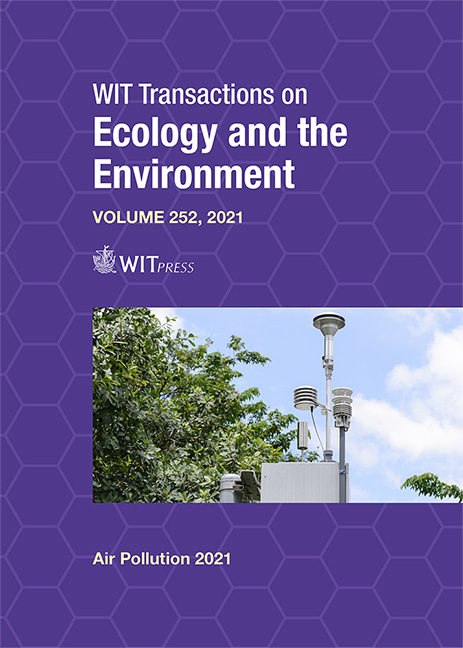INDOOR VOC CONCENTRATIONS AT NURSERY AND PRIMARY SCHOOLS: IMPACT OF COVID-19 PREVENTIVE MEASURES
Price
Free (open access)
Transaction
Volume
252
Pages
8
Page Range
77 - 84
Published
2021
Paper DOI
10.2495/AIR210071
Copyright
Author(s)
JULIANA P. SÁ, PEDRO T. B. S. BRANCO, MARIA C. M. ALVIM-FERRAZ, FERNANDO G. MARTINS, SOFIA I. V. SOUSA
Abstract
The importance of evaluating indoor air pollutants, such as volatile organic compounds (VOC), became a topic of utmost interest, especially during COVID-19 pandemic due to the increasing cleaning and disinfection of hands, surfaces and spaces, the most common measures to prevent the spread of COVID-19. VOC presence in indoor environments can impair human health, particularly above threshold limit values. Thus, this study aimed to quantify the differences between VOC concentrations before and during COVID-19 pandemic in indoor air of one nursery and one primary school in Porto, Portugal. This study was carried out in early 2020 (before COVID-19 pandemic) and early 2021 (during COVID-19 pandemic) in two classrooms – I07_A (nursery school) and S07_B (primary school). Both classrooms presented a similar school timetable between the two periods, but the personal and environmental hygiene throughout the day using alcohol-based sanitisers were hugely increased in 2021. Total VOC (TVOC) were monitored continuously with research-grade instruments for a minimum period of two consecutive weekdays. Two average periods were considered: (i) an average day period (hourly means of all weekdays); and (ii) an average occupancy period (hourly means during occupancy periods considering the school timetable). Descriptive statistical analysis, as well as normality (Shapiro–Wilk Test) and significance (Wilcoxon Signed Rank Test) tests were performed using the R software version 4.0.5. The statistical significance level considered was set to 0.05. TVOC concentrations exceeded the limit value in the Portuguese legislation (1,200 µg/m3) during occupancy period in both classrooms during COVID-19 pandemic, although they never exceeded before the pandemic. Moreover, a statistically significant increase (p-value < 0.05) on TVOC concentrations from 2020 to 2021 were observed in the two studied classrooms for both average day (mean difference: 647 µg/m3 and 1,170 µg/m3 for I07_A and S07_B, respectively) and average occupancy periods (mean difference: 521 µg/m3 and 2,730 µg/m3 for I07_A and S07_B, respectively). Therefore, it was possible to conclude that the continued use of alcohol-based products, as a result of COVID-19 prevention measures, could increase TVOC concentrations to unsafe levels in schools.
Keywords
indoor air quality, school, VOC, COVID-19 pandemic





